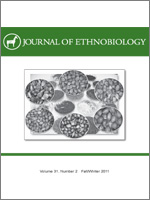This research explores variation in minor millets in the context of traditional knowledge (TK) and scientific knowledge (SK), including ethnobotany genomics, in southern India. In order to perceive biodiversity, we need to take a closer look at the natural variation among species within the context of existing classifications using both TK and SK. Malayali informants of the Kolli Hills in India were surveyed using 174 millet samples. We also collected seeds and grew millets in greenhouse environments from which we recorded 96 morphological characters and extracted DNA for barcoding. Quantitative multivariate classification analysis of these plants revealed that the Malayali millet classification is hierarchical and recognizes considerable fine scale variation with high consensus. In the field, the Malayali classified and consistently identified 19 millet ethnotaxa (landraces). Variation in these same samples was analyzed using morphometric and molecular characters (DNA barcoding) but revealed fewer taxa. Some of the cryptic taxa identified by the Malayali, including a potentially drought tolerant millet ethnotaxa, have considerable nutritional, medicinal, and ecological value.
How to translate text using browser tools
1 December 2011
The Fine Scale Ethnotaxa Classification of Millets in Southern India
Jose Rey Maloles,
Kevan Berg,
Subramanyam Ragupathy,
Balasubramaniam C. Nirmala,
Kabeer A. Althaf,
Vadaman C. Palanisamy,
Steven G. Newmaster
ACCESS THE FULL ARTICLE
It is not available for individual sale.
This article is only available to subscribers.
It is not available for individual sale.
It is not available for individual sale.

Journal of Ethnobiology
Vol. 31 • No. 2
Fall/Winter 2011
Vol. 31 • No. 2
Fall/Winter 2011
biodiversity
ethnobotany genomics
ethnoclassification
millet
traditional knowledge




